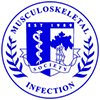Authors: Conway JD, Thonse R
Title: Antibiotic Cement? Coated Nail for the Treatment of Infected Nonunions and Segmental Bone Defects
Institution: Sinai Hospital of Baltimore, Rubin Institute for Advanced Orthopedics, Baltimore, MD
Purpose: Stabilizing a nonunion in the presence of a bone infection is a challenge. Are antibiotic cement? coated intramedullary rods able to treat the infection with high doses of local antibiotics while providing bone stability?
Methods: Fifty? two patients (12 females, 40 males) underwent treatment for infected nonunions and segmental bone defects. Average age was 46.2 years (range, 16?86 years). An antibiotic cement?coated intramedullary rod was inserted in the femur or tibia of each patient. Two methods were used to create the antibiotic?coated intramedullary rods. Initially, rods were made using a mold technique, which is called Method 1. The second generation of intramedullary rods was made with Method 2, which uses silicone tubing to create the rod. Method 1 rods were used to treat 17 infected nonunions and 15 segmental bone defects (average size of defect, 8.63 cm; range, 1?30 cm). The Cierny?Mader host status of patients in the Method 1 group was type A (eight patients) and type B (24 patients). Method 2 rods were used to treat 17 infected nonunions, two segmental bone defects (6 cm and 1.5 cm), and one acute fracture initially treated with external fixation. The Cierny?Mader host status of patients in the Method 2 group was type A (six patients) and type B (14 patients). The majority of patients in the study had methicillin?resistant Staphylococcus aureus (30 patients), and a large number of patients were infected with multiple organisms (15 patients). All rods were made with the same antibiotic recipe of 3.6 g of tobramycin and 1g of vancomycin per 40?g package of cement. The most common intramedullary rod used was a hindfoot fusion rod (16 cases), and the next most common rod was a knee fusion rod (12 cases).
Results: The antibiotic cement?coated intramedullary rod had a 73.1% success rate when treating the difficult problem of infected nonunion with one surgical procedure (Table 1). An average of one additional procedure to treat infection or nonunion was necessary for 26.9% of the patients. Only two patients in this study underwent amputation; the overall limb salvage rate was 96%. Average follow?up for Method 1 and Method 2 was 22.5 months (range, 2?60 months) and 4.5 months (range,1?12 months), respectively. Method 1 had a larger number of patients with additional procedures secondary to their greater number of large segmental bone defects. Complications with Method 1 included cement nail debonding with removal (7), debonding with insertion (1), and retained cement (2). Complications with Method 2 included cement nail debonding with removal (2) and rod incarceration with insertion (1).
Discussion and Conclusion: The antibiotic?coated intramedullary rod is extremely effective when treating infected nonunion and segmental bone defects. These cases would normally require long periods of treatment with external fixation and often bone transport. Patients had a 26.9% risk of an additional procedure for infection or nonunion. This is an acceptable risk given the difficult nature of the initial problem and a relatively low risk when compared with the complications and additional surgical procedures reported in the Ilizarov literature. Although both methods for creating the rod are effective, the silicone tubing method has better reliability in the coating, has fewer complications with insertion, and takes less intraoperative time to create (10 minutes versus 1 hour). The silicone tubing method is our current method of choice to create an antibiotic?coated intramedullary rod. The only disadvantage with Methods 1 and 2 is that the cement can debond during rod removal. The arthroplasty cement removal instruments have been very effective in dealing with this problem. Additional research is being conducted to improve the cement bonding interface, and techniques are being developed to remove cement when it debonds during rod removal.
Table 1: Results
| Percentage(Number of Patients) | |||
|---|---|---|---|
| Combined Results for Mold and SiliconeTubing Groups(Methods 1 and 2) | Results for Mold Group(Method 1) | Results for Silicone Tubing Group(Method 2) | |
| Bone union achieved | 83.7%(41/49) 89.8%(44/49) if patients with stable nonunions are included | 86.2%(25/29) 93.1%(27/29) if patients with stable nonunions are included | 95.0%(19/20) |
| Infections eradicated | 84.6%(44/52) | 78.1%(25/32) | 80.0%(16/20) |
| Patients with additional procedures for infection or nonunion | 26.9%(14/52) | 37.5%(12/32) | 15.0%(3/20) |
| Patients requiring only index antibotic-coated rod | 73.1%(38/52) | 62.5%(20/32) | 85.0%(17/20) |

